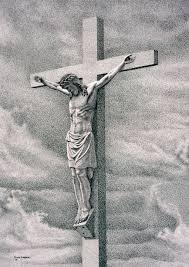My Friends,
I want you to think about something that is amazing and simple. Transformers and the fact they are the closest thing to Aboveunity Energy Machines that exist.
Please keep in mind: Floyd Sweet was a Transformer Expert.
Lets take the age old law of Electromagnetic Induction between two Coils, exactly the same, 200 turns each, on a Core, with Coupling k = 0.8 or so, static, stationary, sitting on the bench.

Lets think about this arrangement a bit more, ask some questions:
- Why don't the Coils, loaded with 30Watt Loads, spontaneously sprint into action?
- Knowing at time t, we will always have opposite M.M.F between each coil, is there a phase difference in M.M.F?
- Coil 1: I1 ( t ) = Im1 sin ( ωt )
- Coil 2: I2 ( t ) = -Im2 sin ( ωt ) = Im2 sin ( ωt + 180° ) Here, the phase difference between the currents (and thus MMFs) is exactly 180°, ensuring the MMFs are always opposite in direction.
- What action will various Load Resistances do to the machine?
- Can we have AC as well as DC in the machine?
Now, we really could go to town, ask lots and lots of questions...

NOTE: The Arrow on the above Secondary Coil is in the wrong direction!
We know the basic Transformer Math, that the Core's Flux, Changing in Time t is an important, key aspect
Transformer Equations
- Voltage (EMF) Induced in a Coil:
The induced electromotive force (EMF) in a transformer coil is given by Faraday's law:
\[ V = N \frac{d\Phi}{dt} \]For a sinusoidal flux, \(\Phi = \Phi_m \sin(2\pi f t)\), the RMS voltage is:
\[ V = 4.44 f N \Phi_m \]where \(V\) is the RMS voltage (V), \(f\) is the frequency (Hz), \(N\) is the number of turns, and \(\Phi_m\) is the maximum magnetic flux (Wb).
- Turns of the Secondary Coil:
The voltage ratio between primary and secondary is proportional to the turns ratio:
\[ \frac{V_s}{V_p} = \frac{N_s}{N_p} \]Rearranging to find the number of secondary turns \(N_s\):
\[ N_s = N_p \frac{V_s}{V_p} \]where \(V_p\) is the primary voltage (V), \(V_s\) is the secondary voltage (V), \(N_p\) is the number of primary turns, and \(N_s\) is the number of secondary turns.
- Magnetic Flux:
From the voltage equation, the maximum magnetic flux \(\Phi_m\) can be calculated as:
\[ \Phi_m = \frac{V}{4.44 f N} \]where \(\Phi_m\) is the maximum magnetic flux (Wb), \(V\) is the RMS voltage of the coil (V), \(f\) is the frequency (Hz), and \(N\) is the number of turns in the coil.
Here we have the Transformer math for inputs and Magnetic field:
- Primary Voltage: \[ V_p(t) = amp \cdot 325.27 \sin(2\pi f t) \]
With \( amp = 7 \), \( f = 50 \, \text{Hz} \):
\[ V_p(t) = 2276.89 \sin(314.16 t) \] - Primary Current: \[ I_p(t) = amp \cdot \frac{325.27}{R} \left( \frac{N_s}{N_p} \right)^2 \sin(2\pi f t) \]
With \( amp = 7 \), \( R = 10 \, \Omega \), \( N_s/N_p = 0.5 \):
\[ I_p(t) = 56.92225 \sin(314.16 t) \] - Magnetic Flux: \[ \Phi(t) = amp \cdot \frac{325.27}{2\pi f N_p} \sin(2\pi f t) \]
With \( amp = 7 \), \( f = 50 \, \text{Hz} \), \( N_p = 100 \):
\[ \Phi(t) = 0.07245 \sin(314.16 t) \] - Secondary Voltage: \[ V_s(t) = -amp \cdot 325.27 \frac{N_s}{N_p} \sin(2\pi f t) \]
With \( amp = 7 \), \( N_s/N_p = 0.5 \):
\[ V_s(t) = -1138.445 \sin(314.16 t) \] - Secondary Current: \[ I_s(t) = -amp \cdot \frac{325.27}{R} \frac{N_s}{N_p} \sin(2\pi f t) \]
With \( amp = 7 \), \( R = 10 \, \Omega \), \( N_s/N_p = 0.5 \):
\[ I_s(t) = -113.8445 \sin(314.16 t) \] - Primary MMF: \[ F_p(t) = N_p \cdot I_p(t) = amp \cdot N_p \cdot \frac{325.27}{R} \left( \frac{N_s}{N_p} \right)^2 \sin(2\pi f t) \]
With \( amp = 7 \), \( N_p = 100 \), \( R = 10 \, \Omega \), \( N_s/N_p = 0.5 \):
\[ F_p(t) = 5692.225 \sin(314.16 t) \] - Secondary MMF: \[ F_s(t) = N_s \cdot I_s(t) = -amp \cdot N_s \cdot \frac{325.27}{R} \frac{N_s}{N_p} \sin(2\pi f t) \]
With \( amp = 7 \), \( N_s = 50 \), \( R = 10 \, \Omega \), \( N_s/N_p = 0.5 \):
\[ F_s(t) = -5692.225 \sin(314.16 t) \]
Transformer Plots
Lets look at the Math, plotted out.
Voltages and Currents
MMFs
Magnetic Flux vs. Input Voltage and Current
Primary Current and Magnetic Flux
We see Symmetry here, this Ideal Conventional Transformer, has a Symmetry, Symmetry of Current, MMF and Voltage, complete Symmetry.
Partnered Output Coils have Symmetry underneath, it is Primarily Asymmetrical, but in every Asymmetrical System, there is an underlaying Symmetry, POCOne and POCTwo incorporate this very same Symmetry, each Coil carry's the same Voltage, Current and MMF, but the Input Coil, the Asymmetrical aspect, carries a very small Current, which sometimes can be negative, is just a tickler, its just to bring the POC's in, to get a Voltage up.
There is a Symphony of Feed Forwards and Feed Backs all occurring all at the same time!
Bar Magnet Simulation
- 60
- 270°
Created by weelookang@gmail.com
Experiment
My Friends, I have given you the experiment, showing you, there is a Feed Forward/Back, and that as a Current is drawn on the Coil, we get a reverse Current generated on the other Coil. Something Science has never explained or shown.
You will note, this shows a concept that Science has always taught, does not exist, it is there, working on the bench!
In other words, we have Electromagnetic Induction occurring more than once in a system, we have offset the Symmetry of the Conventional Transformer, and we have a degree of Asymmetry.
Now, we MUST ask the question, how do we increase this effect, make the feedback and feedforward more valuable?
Best Wishes,
Chris

















